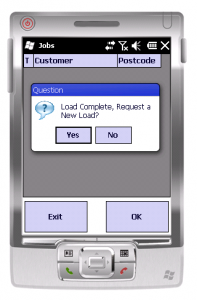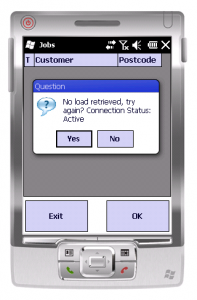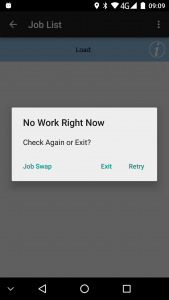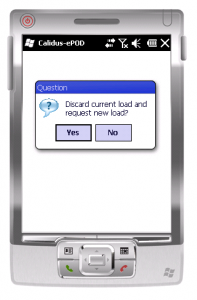PDA New Loads: Difference between revisions
No edit summary |
No edit summary |
||
| Line 5: | Line 5: | ||
File:PDA-NewLoad1.PNG|{{PDAType|WinMo=Y}} | File:PDA-NewLoad1.PNG|{{PDAType|WinMo=Y}} | ||
File:PDA-NewLoad2.PNG|{{PDAType|WinMo=Y}} | File:PDA-NewLoad2.PNG|{{PDAType|WinMo=Y}} | ||
File:EPOD_NewLoad2.PNG|{{PDAType|Android=Y}} | |||
</gallery> | </gallery> | ||
| Line 15: | Line 16: | ||
<gallery widths=250px heights=300px perrow=3> | <gallery widths=250px heights=300px perrow=3> | ||
File:PDA-NewLoad3.PNG|{{PDAType|WinMo=Y}} | File:PDA-NewLoad3.PNG|{{PDAType|WinMo=Y}} | ||
File:EPOD_NewLoad3.PNG|{{PDAType|Android=Y}} | |||
</gallery> | </gallery> | ||
[[Category:UG 291097 EPOD Client User Guide|270]] | [[Category:UG 291097 EPOD Client User Guide|270]] | ||
Revision as of 08:32, 16 October 2014
Retrieving New Loads
If you have completed all jobs on a load, when you are returned to the job menu you will be prompted, asking if you would like to retrieve a new load. If you select Yes, the PDA client will attempt to retrieve the next load available assigned to you. If it is retrieved successfully, the jobs will be displayed within the Job Menu. If this is unsuccessful, you will be advised, and will be given the option to retry. If you click No at either stage the application will shutdown.
Retrieving Existing Loads
In the scenario where the application is exited before completing a load (for example the battery runs out), the data of the load is still stored locally and not lost. This including any pending data that needs to be sent to the system from the PDA.
When the application is next loaded it will ask you if they would like retrieve or discard the current load. Retrieving the current load will return the locally stored load back to you. If you request to retrieve a new load, this will return the first available load on the system to you.




